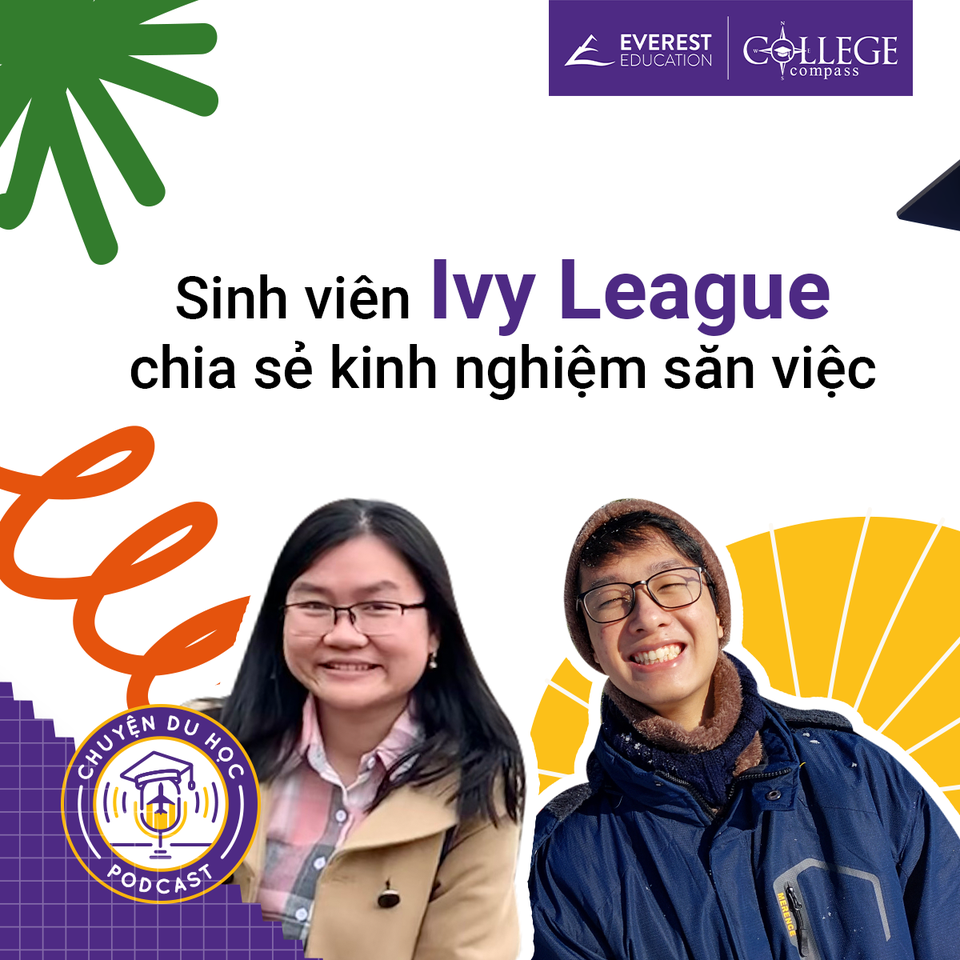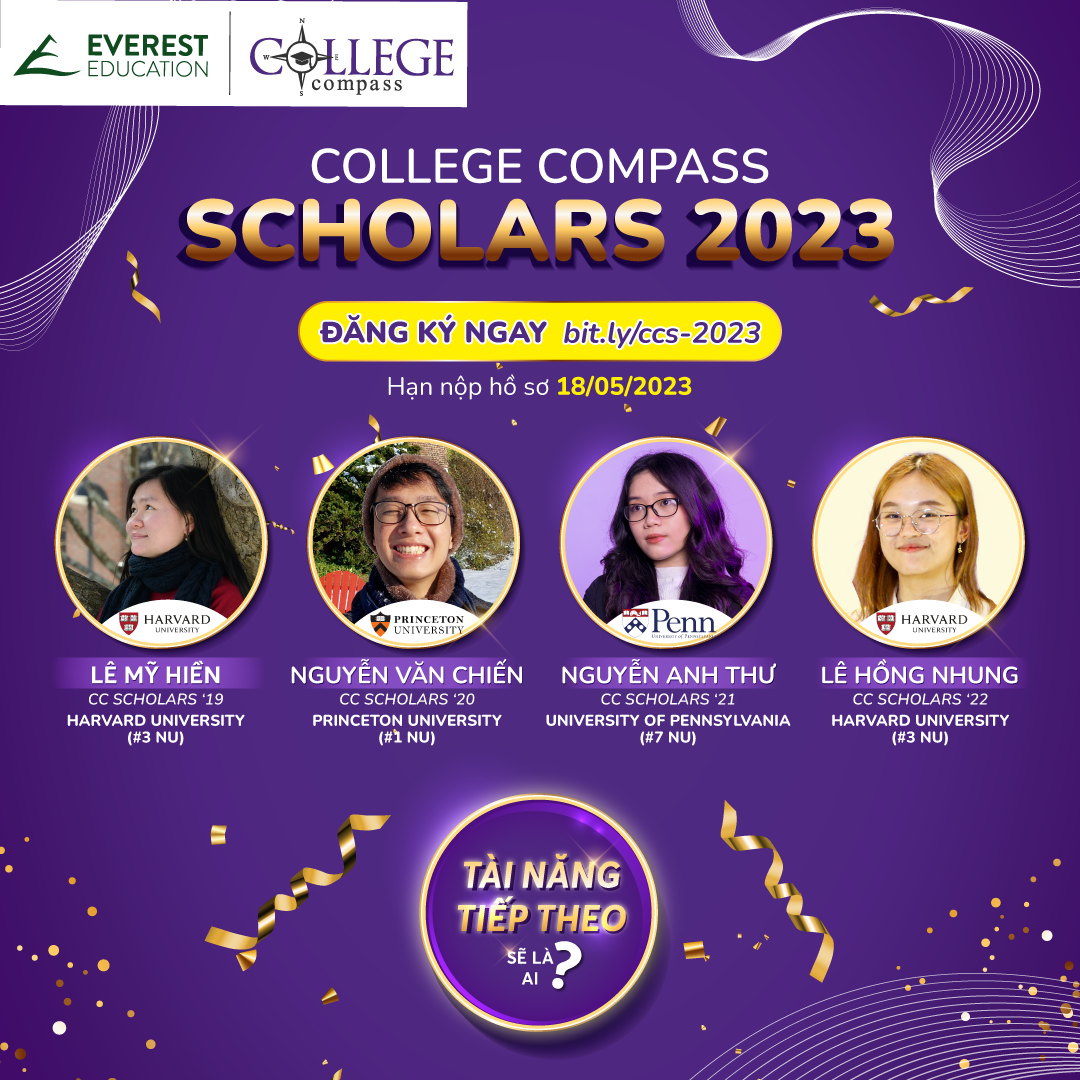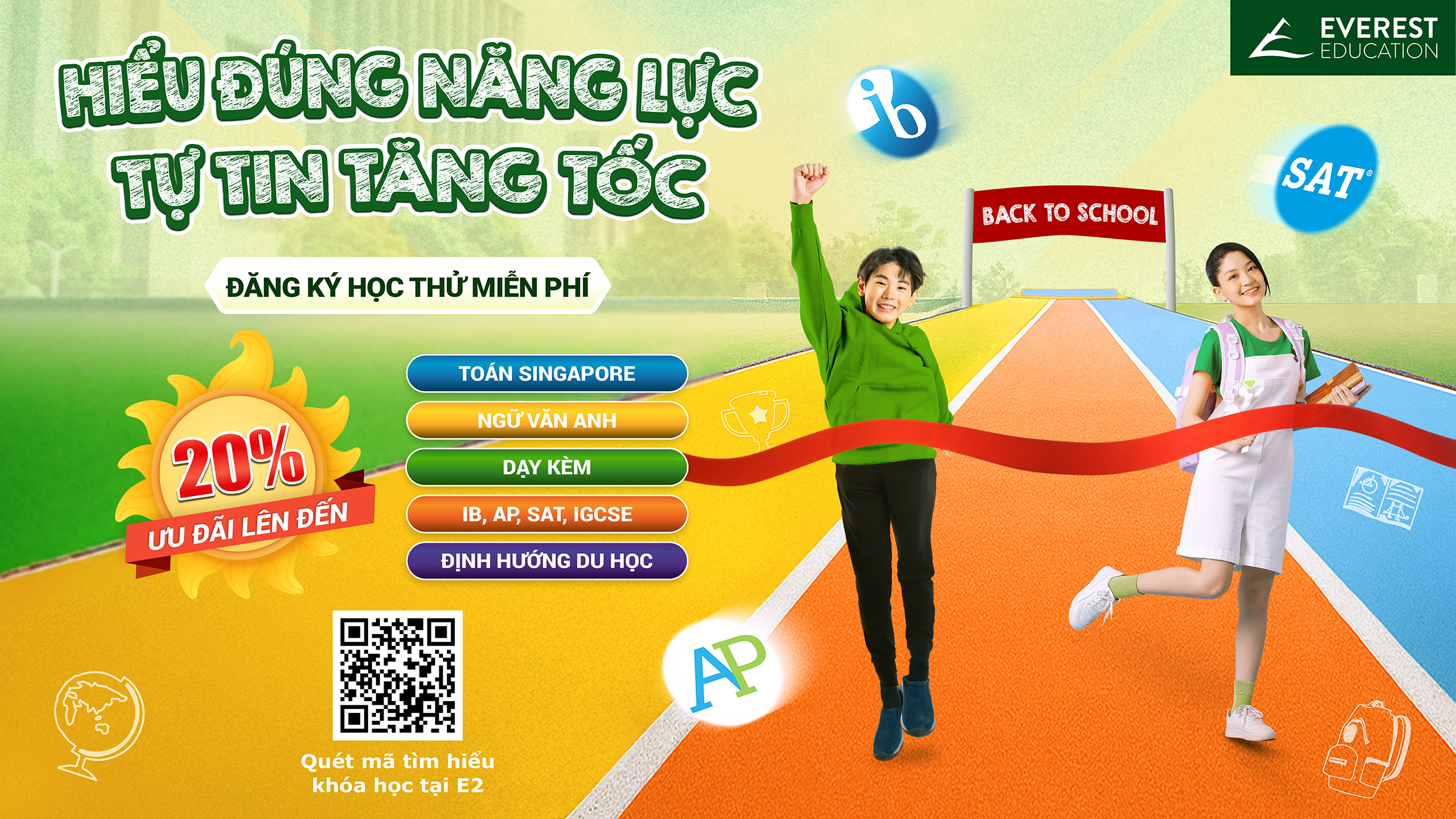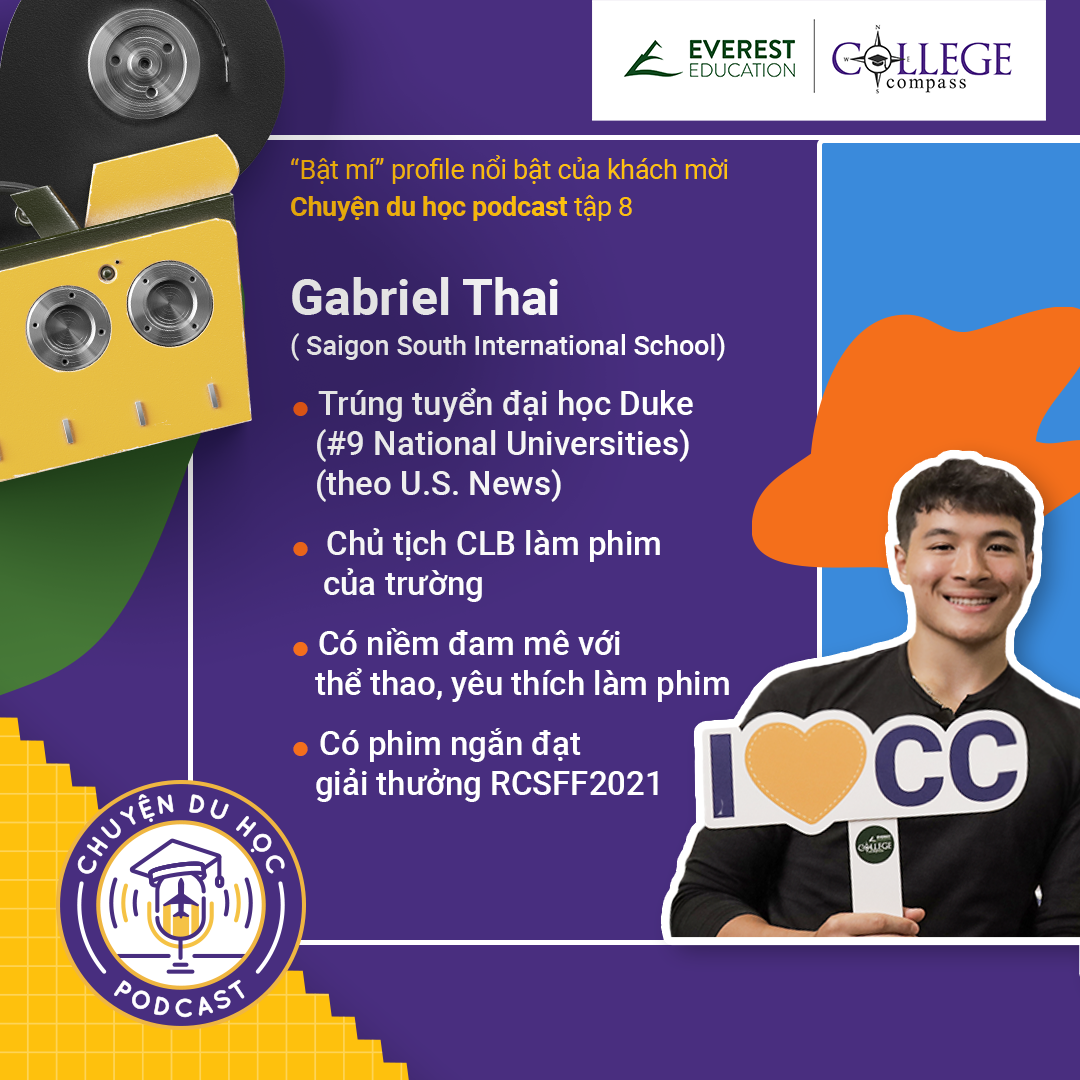Read the full transcript
Don: Hi, my name is Don and I graduated from Stanford.
Tony: And my name is Tony, I graduated from Harvard and Stanford.
Don: We’re the co-founders of Everest Education.
Tony: Over the years, we’ve helped many students get into the college of their dreams. A big part of that is writing your personal essay. And today we found we could do something deeply personal by sharing our own essays that got us into Harvard and Stanford.
So Don and I have talked about this for quite some time, you know if we should even be sharing our actual essays. If you think about it, this is a super personal thing where we’re sharing our desires, our hopes, our fears, and our failures. But we know that we ask the same of our students, we ask them to share with us what they bring. We even ask them to share with each other. So, it’s just fair that we push ourselves and share our own work.
Don: So yeah, I actually haven’t looked at these essays since I was 18 and applying into school. So it’s actually been a really long time. It’ll be interesting for me to see what I wrote at that age and how I thought about the world.
Don: Hope you guys enjoy!
Tony: Alright! Let’s jump right into it. So this is my essay for Harvard Business School on my undergraduate academic experiences. I’ll read each paragraph out loud and then Don and I will have a discussion about it and then see if anything interesting pops up. So the prompt is…..
What would you like the MBA Admissions Board to know about your undergraduate academic experience?
I thought this was relevant, not just for folks applying to graduate school, but anyone applying to undergrad. You really want to showcase how you think as a student and talk about your academic achievements and your academic journey. Whether or not it’s your college or your high school time, you want to find distinct stories, distinct examples that showcase it here. we’ll go and comment paragraph by paragraph.
“It was 6:00 AM on a brisk March morning in Hong Kong. For the past quarter in “Global Project Coordination,” I had been part of a team of eight industrial engineering graduate students from Stanford University and Hong Kong University of Science & Technology assessing the feasibility of a China-U.S.distribution network for hospitality supplies in a company-sponsored project. Together, we formulated theoretical optimization models, created distribution schematics, and tested our assumptions through field interviews, all while collaborating across the Pacific. That March morning our team would work face-to-face for the first time preparing a presentation to update our sponsor company. Having worked together to solve the combination of analytical, team management, and cultural challenges that arose over the past quarter, we had come to appreciate the value of fusing conceptual and experiential learning. Applying academic lessons to real problems has always exhilarated me. Despite the early hour, I felt keenly alert as I eagerly prepared for our work session.”
Don: Tony, if I’m looking at this correctly. What you’ve done here is allowed the reader to step into that first morning, right? I think one of the things that we’ve seen, often times that works pretty well is starting your story, part-way into the story already. Why did you decide that?
Tony: Yeah! That’s a great point! I think it’s much more effective to jump right into the action, where there’s the most extreme emotion that you might have during a specific experience. I remember the feeling I had when we were working that 6 AM morning when I woke up in Hong Kong and how I felt about this work project Most times we have this habit of starting the story right at the very beginning, but for a reader, especially an ad-com committee person who’s going to just jump right into it, that build up often takes too long. If you think about a good movie, they often jump right into the middle of an action scene. We want to do the same thing in some of our essays as well. Although it’s not an action scene, I try to make it a bit more interesting by bringing the reader into that experience with me.
Don: Got it! The other part I noticed is that after you talked about that particular morning, you provided some of the contexts, or basically the background of what you’re doing. Can you talk a little bit about that?
Tony: Yeah, I think it’s super important that you make sure that you help the reader understand what you’re doing and why it’s important, like the overall context of any situation. Even when I jumped right into the moment, I quickly stepped back and said, “Hey, this past quarter I was in this project coordination class, I was part of this team.” We’re working and doing different types of analyses. It’s important to showcase what you did and how it fits into the overall project or problem. At the end, I try to actually even transition out of the details of this context. I bring it back to the moment with the last two sentences.
Applying academic lessons to real problems has always exhilarated me. Despite the early hour, I felt keenly alert as I eagerly prepared for our work session.
We tell our students often times to show, not tell. So instead of saying, “I like to work hard on interesting problems and I’m really motivated.” Actually show it through this experience and summarize it at the end. In this next paragraph here, I try to transition over.
I shaped the rest of my Stanford education in a similar fashion. I sought to develop a well-rounded, rigorous foundation of theoretical and practical knowledge while learning leadership through contributions to the university community.
Essentially, here is the summary of my overall positioning statement with regard to my academics. I’m a well-rounded person who is combining theory with practical knowledge and is trying to apply leadership lessons into the community. I’m basically putting my positioning statement right into the second paragraph here.
Don: Can you explain exactly what our positioning statement is?
Tony: Yeah, I think it’s very important that all students have a clear idea. It’s important that all applicants have a clear idea of what you want to convey to anyone who’s reading your application. You’re only going to have a few minutes to grab their attention. It needs to be super obvious what you are compared to everyone else in the pool. So, the next paragraph…
I studied economic theory to understand how incentives and systems influence societal development. Beyond micro-and macroeconomics, I explored a variety of topics, including the economics of health care, developmental economics, and venture capital investment. Meanwhile, my graduate studies in industrial engineering equipped me with practical, analytical frameworks. In classes like “Strategy in Technology-Based Companies,” I reviewed numerous case studies. Examining actual business dilemmas appealed to my results-driven personality, and I eagerly seized each opportunity to discuss with classmates various decisions protagonists should consider. Together, these economic and industrial engineering courses sowed in me the seeds of a vision to effect large-scale, social change through business.
Don: Can you help me explain the purpose of this paragraph? So you’ve introduced your overall philosophy around who you are as a student, but what does this paragraph serve to do?
Tony: So, in this paragraph here, I wrote a little bit of details on what I studied, but more importantly, I tried to connect it back to why that’s relevant for me as a student. Why was I curious about this thing or how did I take this knowledge and apply it? Especially for business schools, it’s important to be a practitioner, to take theoretical knowledge and apply it. So I highlight that point here, but then I showcase here how I think I’m a good fit for the Harvard Business School environment which really emphasizes discussing case studies and how I’m already very familiar discussing with classmates these types of situations.
Don: That’s actually pretty interesting. I think for many students, especially at the undergraduate level, you’re applying to many different number of programs. You end up writing, a lot of times, general essays that you can use across different schools. Do you find that strategy to be effective? I think here, in this case, you clearly tailored this essay to fit specifically for Harvard. Obviously, that takes more time, can you talk a little bit about that?
Tony: Yeah, that’s actually a great point. I think, although you have the general essays that you may use with multiple schools, wherever applicable, you should try and customize it. What is that school really known for or what is that program really known for? Specifically for Harvard Business School, it’s famous for its case study methodology. There’s very little lecturing, it’s all about students talking to one another and arguing with one another. I highlight some of those skill sets that I already developed in my other studies at Stanford. Lastly, I would say, this final sentence here….
Together, these economic and industrial engineering courses sowed in me the seeds of a vision to effect large-scale, social change through business.
Here, I’m again taking the academic knowledge that I’ve already worked through and tied it back to my positioning statement. Again, I’m someone who’s trying to take the theoretical and make it practical, then apply it to the communities that I’m in. I’m expanding on that a little bit here to talk about how I’m actually a very ambitious person, I actually want to effect large-scale social change through business. That also happens to align with the Harvard Business School mission, to educate leaders who are going to make a difference. Again, when you’re trying to do your school research, you want to make sure and understand the mission, and what makes each program or each school special. So, second to the last paragraph…
I complemented academics with practical and leadership experiences. As a sophomore selected to join Stanford Consulting, a not-for-profit student group, I applied classroom theory to advise Silicon Valley companies in solving strategic marketing problems. In serving as president of Lambda Phi Epsilon, I drew from classroom lessons in organizational behavior to build consensus as we organized charity auctions and bone marrow typing drives.
Don: Okay, can you walk me through a little bit, it looks like your paragraph above is really about academics, and here you’re talking more about your extracurricular activities.
Tony: It was a little bit of a tricky balance for me here, how do I talk about enough of my experiences in a meaningful way? Not just listing it out like the extracurricular list of activities, which is already in the application itself and on my resume. Again, I think the key is tying it to the context of why it’s important to my overall position. So here, the first sentence talks about why it is…
I complemented academics with practical and leadership experiences.
So, the activity we did. Actually, you did Stanford consulting too, right? We both had fun doing that for several years. But the reason that’s important is, it’s taking theory in the classroom and then applying it to work with a real company and do real consulting projects for them. So it’s the application, which is highly aligned with my positioning statement. Even my extracurriculars in a fraternity here, I was president of my fraternity. It’s not just about the fun stuff that the fraternity does, but actually, the lessons in organizational behavior, the leadership management that I applied to the various activities that we were doing. Notice, I don’t go into a ton of detail to either of these activities. One, because we have a word-count limit, but also, it’s not necessarily crucial to the overall essay prompt. In this context, it’s not asking about all the extra-curricular, it’s just asking about my academics. So I really only mention it as a quick supporting point back to the overall academic experience.
At the very end, it’s a pretty standard conclusion, I would say. It basically talks about how I’ve tried to take advantage of all the opportunities that I’ve had and contributing to the overall community. I try to make one phrase to tie it back to the overall theme of me waking up at 6 AM in Hong Kong. Not by saying it explicitly, but using the last sentence…
Fusing theory and application, I approached each problem, case, and project like the dawn of a new day – eagerly.
This kind of echoes the waking up that I had in the very beginning at 6 AM there.
Don: So you’ve chosen to highlight a different number of attributes about your academic experience. For some people, they might focus on maybe a couple of key experiences and go deeper, do you have a perspective on which strategy works better on which circumstances?
Tony: I think it’s really dependent on each person and what you’re trying to accomplish out of the positioning statement. I think it’s perfectly fine to take either approach provided you have enough meat to it. In this case, I think for Harvard Business School, which is a general management program. I think it was better for me to organize my thoughts and show that I can talk about a number of different experiences in a coherent fashion and tie it together. If this was an application for a liberal arts undergraduate experience or something where I want to show that I’m really geeking out, getting really nerdy about one specific concept, I think that’s totally fine. It’s really more of a personal choice than something you have to do one way or the other.
Don: Looking at this essay now, obviously it’s been a number of years and you applied into business school in 2005-2006, right Tony?
Tony: Yeah.
Don: Reading this now, obviously having gone through a lot of different work with students. Is there anything about this you would change or tweak, or generally, do you feel like, “this was pretty good?”
Tony: I tweaked this so many times throughout the process. I had two or three people give me detailed feedback on multiple drafts who were very experienced. They helped me change a lot of this to be much more organized and clearly communicating this. I don’t think I realized how important it was, things like positioning statement in my early drafts. So, some of the feedback I got then was, “Hey, I’m hearing about this project that you’re doing, but I’m not understanding how it relates to who you are as a person?” In terms of the actual phrasing of the examples, I don’t think I would do much differently. I did probably 20-30 drafts of this essay through a 6-month period, so I feel pretty good about it.
Don: Okay, great!
Tony: Thanks for watching all the way to the end. We hope that you guys find that detailed review useful for yourselves. If you like the content, please help us out by liking, sharing, and subscribing to our content. We’ll post a bunch of additional content below. And if you guys have any questions, comments or other topics you like us to address, please let us know.
Don: So one of the things that we want to do, we want to do this for you as well. If you are open to having your essay reviewed publicly, let us know! Send a copy of your essay to the email in the link below and we’ll be happy to do a similar session for you.
Tony: Thanks, guys!
 Send us your essay via info@e2.com.vn
Send us your essay via info@e2.com.vn


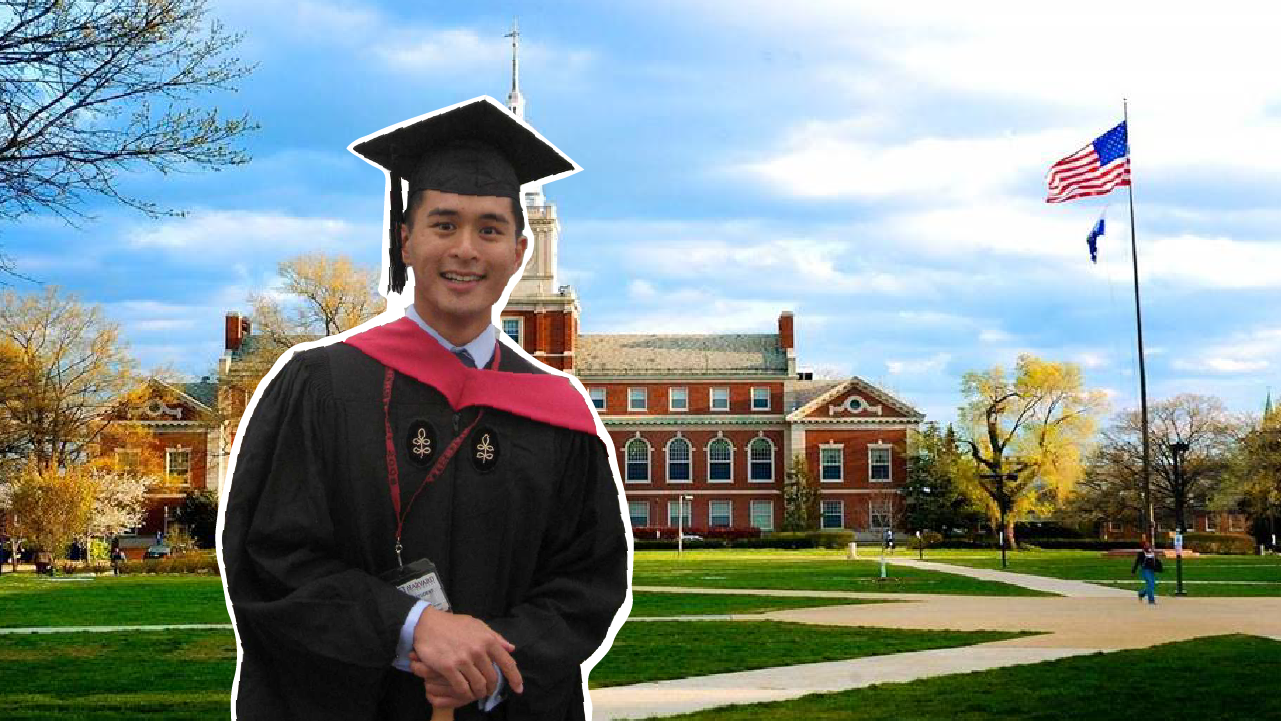
 Send us your essay via
Send us your essay via 
